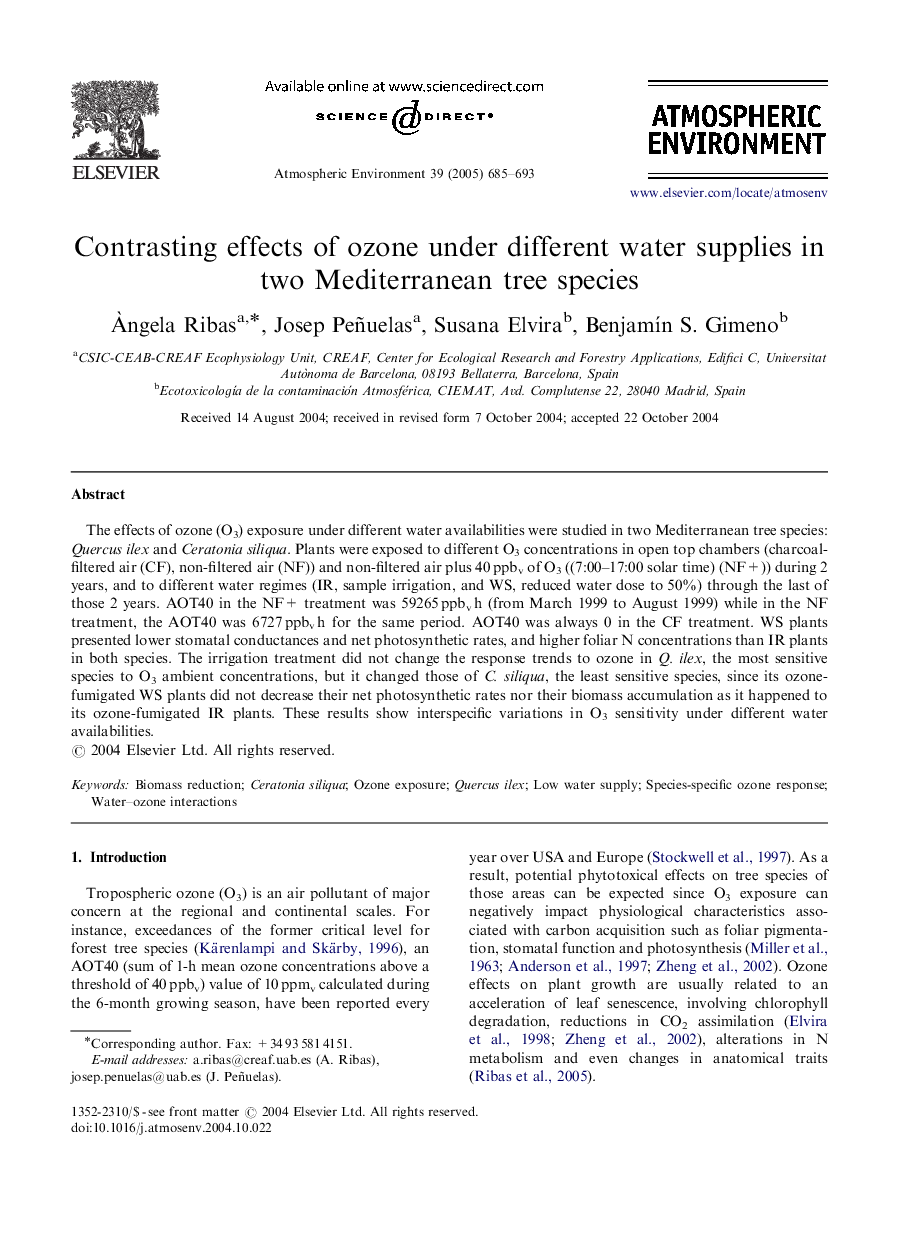| Article ID | Journal | Published Year | Pages | File Type |
|---|---|---|---|---|
| 9458733 | Atmospheric Environment | 2005 | 9 Pages |
Abstract
The effects of ozone (O3) exposure under different water availabilities were studied in two Mediterranean tree species: Quercus ilex and Ceratonia siliqua. Plants were exposed to different O3 concentrations in open top chambers (charcoal-filtered air (CF), non-filtered air (NF)) and non-filtered air plus 40 ppbv of O3 ((7:00-17:00 solar time) (NF+)) during 2 years, and to different water regimes (IR, sample irrigation, and WS, reduced water dose to 50%) through the last of those 2 years. AOT40 in the NF+ treatment was 59265 ppbv h (from March 1999 to August 1999) while in the NF treatment, the AOT40 was 6727 ppbv h for the same period. AOT40 was always 0 in the CF treatment. WS plants presented lower stomatal conductances and net photosynthetic rates, and higher foliar N concentrations than IR plants in both species. The irrigation treatment did not change the response trends to ozone in Q. ilex, the most sensitive species to O3 ambient concentrations, but it changed those of C. siliqua, the least sensitive species, since its ozone-fumigated WS plants did not decrease their net photosynthetic rates nor their biomass accumulation as it happened to its ozone-fumigated IR plants. These results show interspecific variations in O3 sensitivity under different water availabilities.
Related Topics
Physical Sciences and Engineering
Earth and Planetary Sciences
Atmospheric Science
Authors
Ãngela Ribas, Josep Peñuelas, Susana Elvira, BenjamÃn S. Gimeno,
